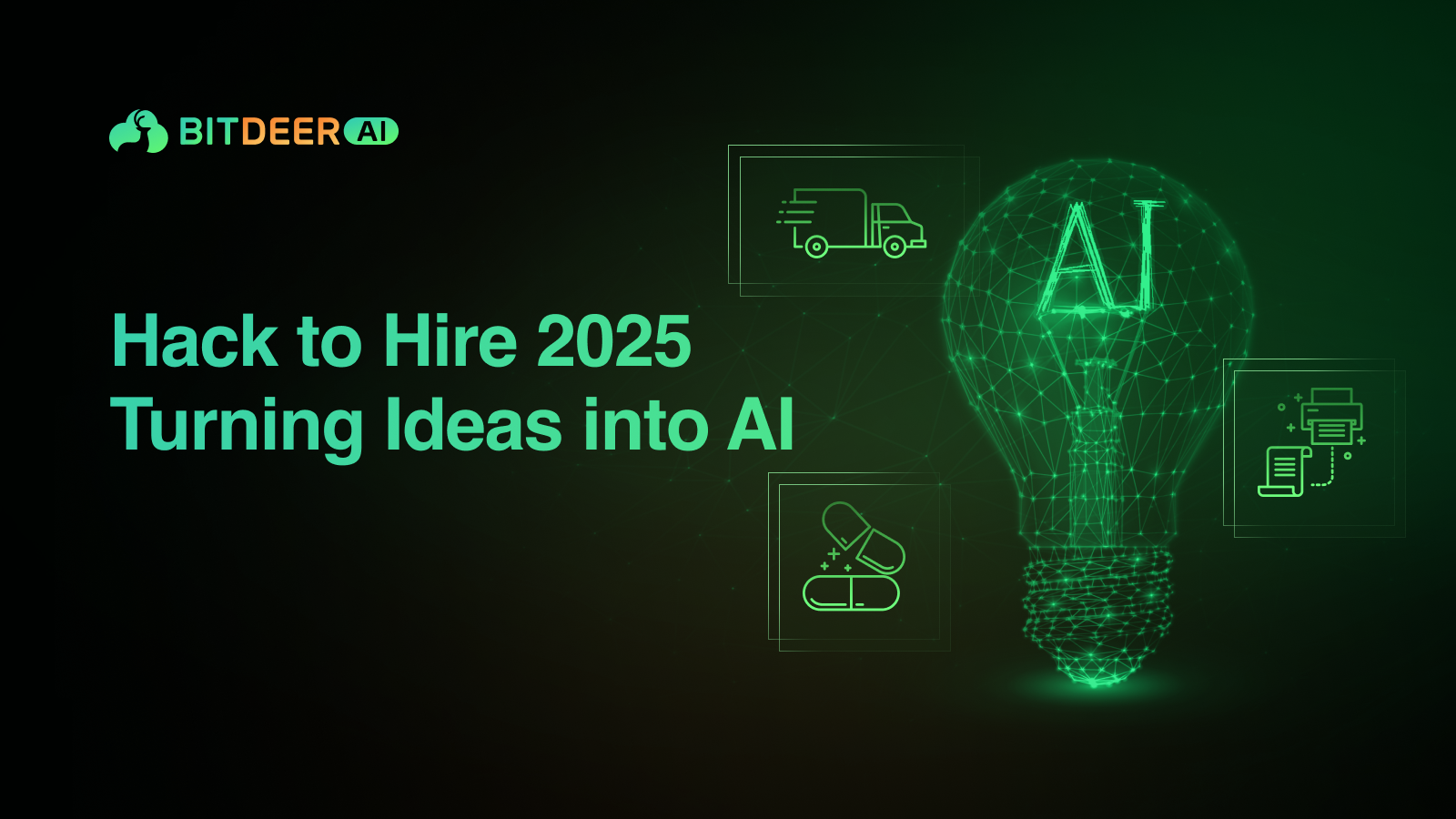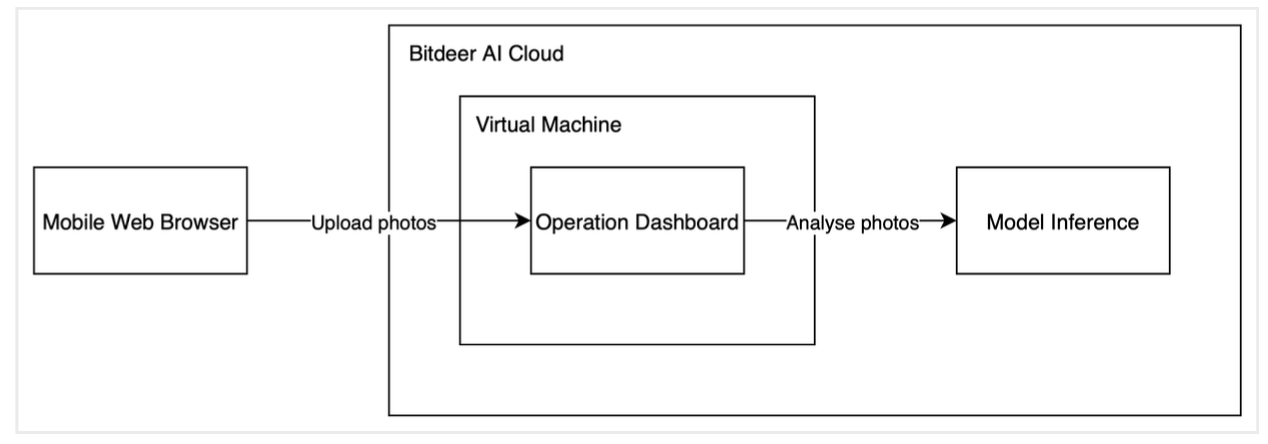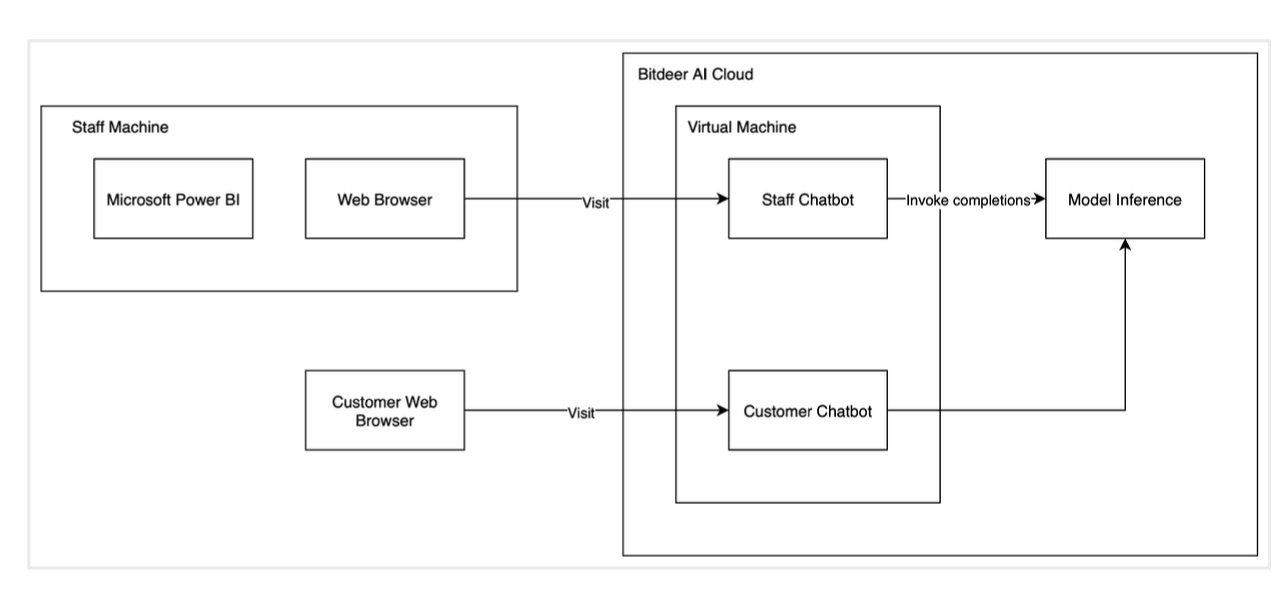Hack to Hire: Empowering AI Innovation Through Bitdeer AI Cloud

The Hack to Hire hackathon series, jointly organized by Bitdeer AI and GECO Asia concluded the first event earlier in September, bringing together emerging engineers, developers, and data scientists to tackle real-world business challenges through AI. Over several days, participants used Bitdeer AI Cloud’s GPU virtual machines and AI model library to build practical prototypes across multiple industries, including publishing, logistics, and consumer goods.
The event demonstrated how access to scalable computing and pre-trained AI models can dramatically shorten development cycles, transforming ideas into deployable solutions within days. It also reflected Bitdeer AI’s commitment to nurturing the next generation of AI talents while enabling enterprises to accelerate digital transformation through intelligent infrastructure.
Case1: Building Data-Driven Market Insights
Background: A Singapore-based publishing company with over three decades of history is one of the largest scientific publishers in the Asia-Pacific region. It produces more than 600 new titles and 130 journals annually in multiple languages, serving a diverse academic audience worldwide.
Challenges: The company’s teams spent extensive time manually researching and categorizing information from universities, journals, and books. Without real-time analytics or insight generation, the management struggled to identify high-performing content areas, forecast demand, or understand relationships between academic institutions and sales performance.
Solution: Participants built an AI-powered analytics platform on Bitdeer AI Cloud using natural language processing and data-mining models. The system analyzed large datasets to uncover hidden connections between topics, readership, and market trends. With configurable prompts, users could automatically generate customized insights such as emerging research areas or optimal sales channels without technical expertise.

Outcome: The prototype provided a foundation for intelligent decision-making, enabling the company to shift from manual data exploration to predictive market analysis. Executives could visualize real-time performance indicators, identify growth areas, and respond proactively to industry trends.
Case2: Automating Pharmaceutical Supply Chain Management
Background: A logistics company operating across Asia focuses on pharmaceutical distribution, custom packaging, and transshipment to Japan and Indonesia. Its operations relied heavily on manual processes for warehouse inspections and inventory tracking.
Challenges: Recording product information and medical kits required significant time and manual effort. Warehouse data was captured in spreadsheets, with limited analytical visibility. These inefficiencies not only delayed reporting but also introduced human error, hindering the company’s ability to monitor operations effectively.
Solution: Using Bitdeer AI Cloud’s GPU infrastructure, participants developed a mobile-friendly web application that combined photo capture with AI image recognition. Warehouse staff could take photos of cartons or medical kits, which were then uploaded for real-time analysis. AI models automatically identified SKUs, verified packaging, and updated inventory records.

Outcome: The system significantly reduced manual data-entry time and error rates while improving inventory accuracy. Real-time analytics dashboards gave supervisors complete visibility into logistics operations and stock movement. The prototype illustrated how cloud-based AI can drive operational efficiency and compliance in the highly regulated pharmaceutical logistics sector.
Case 3: Building an Integrated AI Ecosystem in FMCG
Background: With over 50 years of market presence, this leading FMCG company had built a strong brand heritage. However, its digital infrastructure had become increasingly fragmented over time. The deployment of disparate systems for customer service, marketing, and internal operations led to entrenched data silos and disrupted information flow.
Challenges: The organization grappled with two core operational gaps: a lack of centralized visibility for business reviews and the absence of a 24/7 customer service channel. This left decision-makers without a consolidated view of performance, while corporate chatbots remained offline after hours. Internally, significant productivity was lost as staff manually handled routine HR and IT inquiries.
Solution: The hackathon team created a comprehensive AI ecosystem using Bitdeer AI Cloud. It comprised three interconnected components:
- A customer-facing chatbot powered by large language models to provide real-time, natural language interaction for users seeking information or support.
- A business intelligence (BI) dashboard built on Microsoft BI, aggregating marketing, sales, and inventory data into interactive visualizations for leadership review.
- A staff-facing assistant chatbot that automated HR and IT queries, improving efficiency and response time for internal teams.

Each module was deployed and tested using Bitdeer AI Cloud’s model library and virtual machines, enabling fast iteration and integration across the company’s systems.
Outcome: The prototype established a unified AI foundation for both customer engagement and internal operations. It improved responsiveness, enhanced data visibility, and reduced administrative workload demonstrating how enterprise-grade AI can drive organizational agility and connected intelligence.
Bitdeer AI Cloud: The Foundation for Scalable Innovation
All three projects were developed and deployed on Bitdeer AI Cloud, which provided participants with GPU computing, pre-trained AI models, and flexible development environments. The platform allowed teams to build, train, and deploy models without complex setup or infrastructure management.
By streamlining AI experimentation and deployment, Bitdeer AI Cloud enabled participants to focus on solving business problems and delivering measurable outcomes. The hackathon served as a real-world demonstration of how robust AI infrastructure accelerates both learning and innovation.
Accelerating the Future of AI Development
Hack to Hire demonstrated how advanced cloud infrastructure and AI technologies can support digital transformation across a wide range of industries. In just a few days, participants developed functioning prototypes that addressed key business challenges in sectors from manufacturing to retail, improving efficiency, operational intelligence, and innovation capabilities.
Bitdeer AI delivers high-performance, cost-effective, and production-ready AI solutions, helping organizations move projects from concept to implementation and achieve measurable business impact. The event also underscored a growing reality: scalable AI infrastructure is increasingly essential for driving intelligent growth, optimizing operations, and enabling innovation across industries. This successful round paves the way for the next as Hack to Hire returns soon with more opportunities for innovation and collaboration.